Business
Union Budget 2023: Govt to borrow record Rs 15.4 lakh crore in FY24 to bridge revenue gap

NEW DELHI, (PTI): The government plans to borrow a record Rs 15.4 lakh crore from dated securities in FY24 to meet its expenditure requirement to prop up the economy.
This is higher than the total borrowing of Rs 14.21 lakh crore for the current financial year ending March 31, 2023.
Finance Minister Nirmala Sitharaman while presenting the Budget on Wednesday said the net market borrowings from dated securities are estimated at Rs 11.8 lakh crore to finance the fiscal deficit in 2023-24. ”The balance financing is expected to come from small savings and other sources. The gross market borrowings are estimated at Rs 15.4 lakh crore,” she said. The government has raised Rs 12.93 lakh crore till January 27, which is 91 per cent of the overall borrowing target of Rs 14.21 lakh crore estimated for 2022-23.
The indebtedness of the Centre and state governments together is equal to 83 per cent of the annual gross domestic product (GDP).
The finance minister retained the fiscal deficit target at 6.4 per cent despite an increase in the subsidy bill.
”Coming to 2023-24, the total receipts other than borrowings and the total expenditure are estimated at Rs 27.2 lakh crore and Rs 45 lakh crore, respectively. The net tax receipts are estimated at Rs 23.3 lakh crore,” she said.
She pegged the fiscal deficit at 5.9 per cent of GDP for FY24. ”In my Budget Speech for 2021-22, I had announced that we plan to continue the path of fiscal consolidation, reaching a fiscal deficit below 4.5 per cent by 2025-26 with a fairly steady decline over the period. We have adhered to this path, and I reiterate my intention to bring the fiscal deficit below 4.5 per cent of GDP by 2025-26,” she said.
Sitharaman had pegged gross market borrowing through dated securities for 2022-23 at Rs 14,95,000 crore.
However, the government in September 2022 decided to cut the gross borrowing to Rs 14.21 lakh crore during FY23. The gross borrowing for 2021-22 was Rs 12,05,500 crore.
With regard to the net borrowing, the government estimated a record Rs 11.6 lakh crore raising from the market in 2022-23.
This was nearly Rs 2 lakh crore higher than the current year’s Budget estimate of Rs 9.7 lakh crore.
The total market borrowings of the government for 2022-23 are estimated at Rs 11,58,719 crore, according to the previous Budget document.
The Revised Estimates for the same for 2021-22 are Rs 8,75,771 crore against the Budget Estimates of Rs 9,67,708 crore. (PTI)
Business
Jet Airways founder Naresh Goyal’s interim bail plea rejected, allowed to undergo Cancer treatment for two months
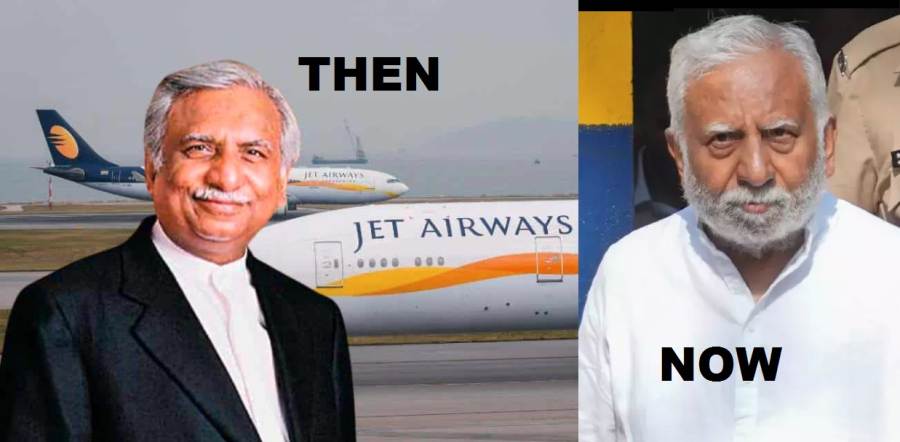
MUMBAI, (PTI): A special court here on Thursday refused to grant interim bail to Jet Airways founder Naresh Goyal, arrested in a money laundering case, but permitted him to undergo cancer treatment at a hospital of his choice for two months.
Goyal (74), who is lodged in Arthur Road jail in central Mumbai, had sought to be released on interim bail to undergo treatment for cancer.
Special judge for cases under Prevention of Money Laundering Act (PMLA) M G Deshpande permitted Goyal to undergo treatment for the illness at Tata hospital or any other hospital of his choice for a period of two months.
Last month, Goyal was permitted by the court to undergo tests at a private hospital here.
On February 15, Goyal filed an application seeking interim bail on medical grounds as the tests revealed malignancy.
The application said Goyal has to undergo some scans to determine the stage of the malignancy, based on which doctors will be able to determine the line of treatment, including surgery and chemotherapy.
The doctors have advised an aggressive and immediate line of treatment to arrest any fatal issues that could arise in the applicant’s case, the plea added.
Goyal was arrested in September 2023 by the ED, which claimed he had laundered money and siphoned off loans to the tune of Rs 538.62 crore given to Jet Airways by Canara Bank.
The money laundering case stems from a Central Bureau of Investigation (CBI) FIR against Jet Airways, Goyal, his wife Anita and some former executives of the now-grounded carrier in connection with the alleged bank fraud. (PTI)
Business
77-79 percent of Goa’s population is online, more than double of that of Bihar: CPIE India

MUMBAI/PANAJI: According to a report by the Centre for Promoting Indian Economy (CPIE India), almost 77 to 79 percent of Goa’s population is online and access the internet or world wide web at least 4-7 times a month at the bare minimum. This is more than twice as that of Bihar and some other states.
Similarly, nearly 50 per cent of Goans use mobile email apps (like Gmail app) at least 3 times a month and about 80 percent of Goans own an internet and email enabled smartphone, the CPIE said in a statement.
According to CA Junaid Shaikh and journalist and publicist Flynn Remedios (formerly a Tech consultant with the Mumbai Cyber Crime Cell and volunteer with the CPIE) – both of whom were associated with the CPIE study titled “Internet Penetration and Usage in Goa”, about 90 per cent of Goans (and Goan-based Indians combined) use the YouTube app at least twice a month.
The CPIE report on internet usage in Goa is close to that of the Internet and Mobile Association of India (IAMAI), which claimed that for the first time, over a half of the country’s population are now active internet users, though not regularly.
According to IAMAI stats, 759 million Indians, out of a total population of 1.4 billion, access the internet at least once a month. This represents a 14% increase compared to 2021, driven largely by growth in rural areas. Rural India added 56 million new users in the past year, while urban centers saw slower 6% growth.
In Goa, the CPIE found that since 2019 till date, there has been a 25 per cent increase in internet users in Goa and even Goans above 60 (considered not so net savvy) are now using smartphone enabled internet apps.
Growth of smartphone usage in Goa peaked during the Covid pandemic-related lock down as all youngsters in the age groups of 7 to 17 were attending online classes and using smart phones. Many Goan families who did not possess a smart phone were forced to purchase one as their kids had no option but to attend online classes, Remedios noted.
India’s active internet base is predicted to increase to 900-950 million by 2025. A majority of new users in India are expected to be women, thus closing the gender gap. Currently, 54% of users are male, however by 2025, women are projected to account for 65% of new users.
In Goa 55 percent of internet-enabled smartphone users are men, while 45 percent are women, Remedios said, quoting the CPIE report.
Similarly in Goa, UPI-based payment apps (Google Pay, Phone Pe, etc) account for more than 85 per cent of all online transactions according to CPIE India. Across India, Unified Payments Interface (UPI) has emerged as the dominant platform, used in 99 per cent of digital payment transactions.
The IAMAI highlights the digital divide in India, with Goa having an average of 70 per cent of its population online, compared to just 32 per cent in Bihar.
In rural areas of Goa (Bethoda, Panchwadi, parts of Ponda, Priol, Valpoi, Quepem, etc) the internet penetration is only 40 per cent as most phone users still use the older keypad phones and do not have email access on their handheld devices. This is however in the age group of 45 to 60, while in the age group of 20 to 45, the usage is much higher.
Business
Complete details about Provident Fund (PF) withdrawal: More info about PF | EPF or PF Withdrawal Rules
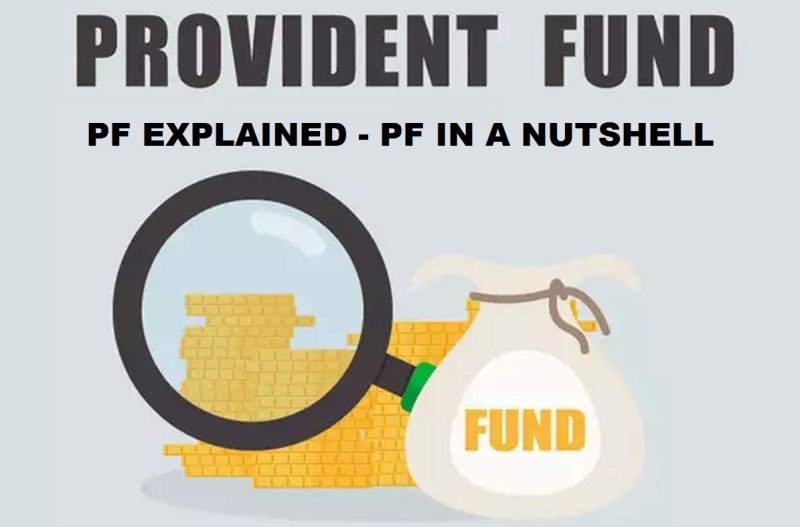
What is PF: PF, or Provident Fund, is a contribution-based savings scheme where both the employee and the employer contribute to create a monetary fund to cater to post-retirement necessities. The corpus created can be accessed or withdrawn by the employee subject to certain Provident Fund withdrawal rules.
The Employee Provident Fund in India is administered by a statutory body, Employees’ Provident Fund Organisation, offering a financial backup for Indian residents employed in the organised sector.
An individual can withdraw a partial amount from his or her employee provident fund account before its maturity (except in the case of unemployment) under certain situations.
Here are some of the circumstances that allow an individual to prematurely withdraw the sum.
EPF Withdrawal Rules 2023
Here are some of the basic rules that one must take note of:

Withdrawal of Provident Fund
PF is meant to be withdrawn after an individual’s retirement. However, there are certain Provident Fund withdrawal rules that allow the individual to utilise the accumulated sum for emergency purposes.
Account-holders can make three different types of PF withdrawals, namely–
- PF final settlement.
- PF partial withdrawal.
- Pension withdrawal benefit
An individual can withdraw a partial amount from his or her employee provident fund account before its maturity (except in the case of unemployment) under certain situations.
Here are some of the circumstances that allow an individual to prematurely withdraw the sum.
Common Reasons for Provident Fund Withdrawal with applicable PF Withdrawal Rules
Here are some reasons for PF withdrawal, along with the applicable rules for each case-
-
In Case of Unemployment
A PF account holder can withdraw up to 75% of the total accumulated amount if he/she has been unemployed for more than 1 month after relinquishing employment. This provision also allows the account holder to withdraw the remaining 25% if the unemployment period stretches over 2 months.
-
For Education
PF account holders can withdraw up to 50% of the total employee’s contribution to EPF to pay for their higher education or to bear the education cost of their children after class 10.
The funds will be transferable after contributing a minimum of 7 years towards the EPF account.
-
To Pay for Marriage
The latest PF withdrawal rules also allow an account holder to withdraw up to 50% of the employee’s share to pay for the necessary expenses for a marriage.
The marriage should be of the individual concerned, or the account holder’s son, daughter, brother, and sister. However, this provision can be utilised only after the completion of 7 years of PF contribution.
-
For Specially-abled Individuals
Under the PF withdrawal rules 2023, specially-abled account holders can withdraw 6 months basic wage along with dearness allowance, or employee share with interest (whichever is less), to pay for the cost of equipment.
This decision was made to help ease the financial burden individuals might experience to purchase expensive equipment.
-
For Medical Emergencies
A PF or EPF account holder can also withdraw the EPF balance to pay for urgent medical treatments for certain diseases. This facility is allowed for both self-usage or to pay for treatment of immediate family members.
One can withdraw 6 month’s basic wage and dearness allowance, or the employee share along with interest, whichever is less.
-
To Pay for Existing Debts
Individuals can withdraw 36 months of basic wage + dearness allowance, or the total of employee and employer share along with interest to pay their home loan EMIs.
However, this facility is available only after a minimum of 10 year’s contribution towards the EPF account.
-
To Purchase Residential Property or Land Plots
According to PF withdrawal rules, the account holder is allowed to make a premature withdrawal to purchase empty land or prefabricated houses.
EPFO has allocated a PF withdrawal limit for this purpose; for example –
| Contribution towards EPF | Withdrawal Limit | Purpose |
| 24 month’s basic wage and Dearness Allowance | The accumulated funds from the EPF account, including the employee and employer’s share. | To purchase a house, flat, or to construct a residential property. |
| 36 month’s basic wage plus Dearness Allowance | The accumulated funds along with the total interest, whichever is lower. | To purchase or construct a residential property or flat. |
-
For Home Renovation
Provident fund new rules also come with a provision to withdraw 12 month’s basic wage plus Dearness Allowance, as well as the employee’s share with interest (whichever is smaller) for home alteration, improvement, or expansion.
The residential property can be of the PF account holder, owned by his or her spouse, or owned jointly.
An individual can avail this facility 2 times, once after 5 years of completing the residential property, and after 10 years can withdraw PF amount for the first time.
Revised EPF withdrawal rules also allow an account holder to withdraw up to 90% of the accumulated funds after they reach 54 years of age or a year before retirement/superannuation.
Also, in case of the sudden demise of an employee (while he or she is still in service), their nominee/beneficiary can apply for a settlement (Form 20), or a monthly pension (Form 10D).
PF withdrawal rules provide adequate flexibility to allow an individual to cater to various emergency requirements using their savings.
One can also choose to invest in other high-return investment options, like Mutual Funds, if they have surplus funds after utilising the withdrawn amount.
These investment options offer a higher return than traditional savings schemes, while tax saving Mutual Funds can also help an individual to decrease their tax liability.
Steps to Enter, Exit and Withdraw PF
If your Provident Fund (PF) withdrawal is being delayed, it could be because the exit date has not been specified. To avoid this, the Employees’ Provident Fund Organisation (EPFO) has created a feature on the Unified Portal where the employee can input the date of departure from the previous employer on his or her own. Previously, only the employer could enter the exit date, but now employees can do so as well.
By login into the UAN portal with your Universal Account Number (UAN) and password, you can adjust the exit date. However, you must verify to see if the exit date is listed by clicking on ‘Service History’ in the top panel under ‘View.’
The following are the steps you must take in order to enter the Exit Date:
- Enter your Unified Account Number and Password to access your UAN site.
- On the top panel, select ‘Manage,’ then ‘Mark Exit,’ which is found beneath it.
- Select the employer from the drop-down menu.
You will be taken to a new page where you must input your birth date, date of joining, and date of exit. If your departure date is before the 15th of the month, refer to the date on your resignation letter.
Documents Required for EPF Withdrawal
The following listed documents are required to withdraw PF amount-
- Universal Account Number (UAN)
- Identity and address proof
- Bank account information of the EPF subscriber
- Cancelled cheque with IFSC code and account number
Grievance Portal of PF Withdrawal
If you have a complaint about the EPFO’s services, you can file it online through the EPF grievance handling system. You can file a grievance, send a reminder, check the status of your complaint or grievance, upload your grievance paperwork, and even change your password using this system.
Lowering Tax Burden on EPF Withdrawal
An account holder can also lower their tax liability on premature withdrawal of their PF amount. Usually, withdrawals are liable for TDS.
But, according to the revised EPF withdrawal rules 2023, withdrawal of funds after a minimum of 5 years of service will attract no TDS.
Employee’s Provident Fund was already an attractive savings scheme, with the facility to transfer one’s EPF account with a UAN number, and with the provision to earn interest on the balance fund for up to 3 years without any contribution.
The new withdrawal rules have made the system even more beneficial for individuals working in the organised sector, thanks to the provision to avail funds at an emergency basis.
Business
TRAI cracks down on unauthorised telemarketers; directs telcos to stop misuse of headers, message templates
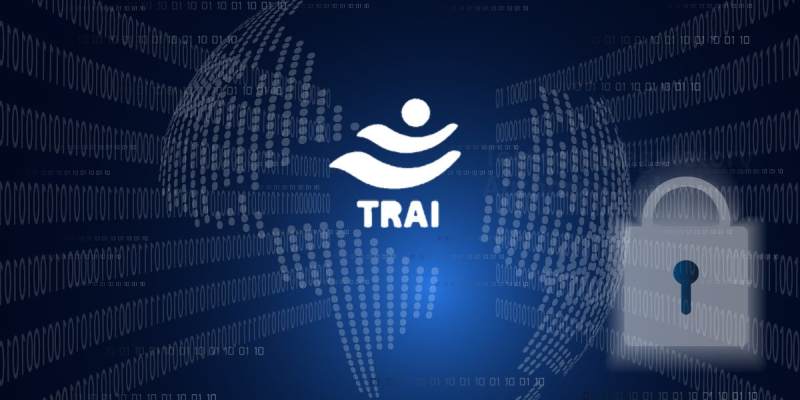
NEW DELHI, (PTI): Telecom regulator TRAI on Thursday cracked down on unauthorised, pesky promotional messages by telemarketers as it issued directions to telecom operators to act swiftly to stop the misuse of headers and message templates.
To stop the misuse, the regulator has directed access service providers (telecom operators) to reverify all registered headers and message templates on Distributed Ledger Technology (DLT) platform and block all unverified headers and message templates within 30 and 60 days respectively.
Telecom operators have also been asked to ensure that temporary headers are deactivated immediately after the set time duration.
”… Remove confusions among recipients of message and prevent their misuse, no look-alike headers (headers which are similar by virtue of combination of small case or large case letters) are to be registered by access providers in names of different Principal Entities,” TRAI said.
To curb messages from unauthorised or unregistered telemarketers, including telemarketers using telephone numbers, telecom operators have been directed to ”bar all telemarketers, who are not registered on DLT platform from handling the message template scrubbing and delivery of messages to recipients through Access Providers’ network”.
Telcos will have to ”ensure that promotional messages are not transmitted by Unregistered Telemarketers or Telemarketers using telephone numbers (10 digits numbers).” Telecom operators have been instructed to take action against all erring telemarketers as per stipulated regulations and also initiate actions as per relevant legal laws.
”The Access Service Provider shall also notify details of such Telemarketers to other Access Providers, who shall, in turn, bar these entities from sending any kind of commercial communications through their networks,” TRAI said.
TRAI has asked all telecom service providers to comply with its directions within thirty days. (PTI)
Business
Jairam Ramesh writes to RBI, SEBI seeking investigations on Adani Group
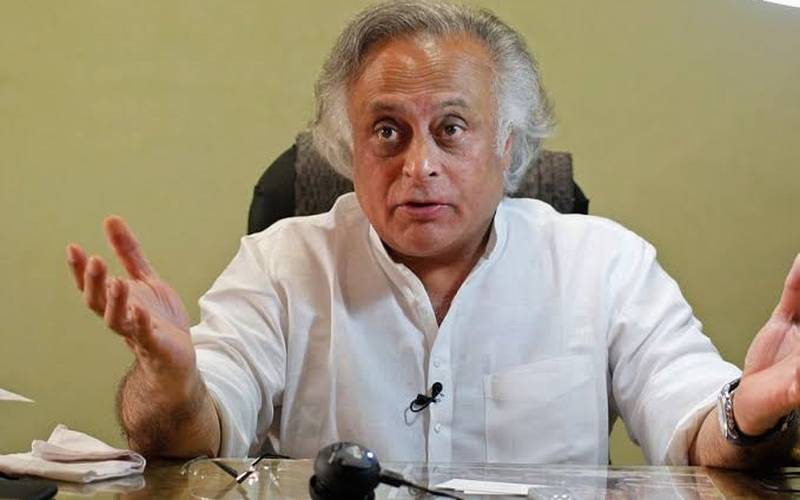
NEW DELHI, (ANI): Congress leader Jairam Ramesh has written to Reserve Bank of India Governor Shaktikanta Das and SEBI chairperson Madhabi Puri Buch, in two separate letters, seeking an investigation on the allegations levelled against the Adani Group by Hindenburg Research. Citing the Adani Group’s large size, his letter to the SEBI chief said investigations must be “fair and complete, with no favour”.
“Any failure to do so will cast a shadow on Indian corporate governance and on India’s financial regulators, and could affect our ability to raise funds globally,” the letter read. He reiterated that a full-fledged independent investigation must be carried out on the numerous allegations levelled against the Adani Group.
Further, in his letter, he raised questions in what he said is why financial institutions of national importance such as the Life Insurance Corporation of India and the State Bank of India have heavily bought Adani Group equity when most private funds were severely underweight.
“LIC, which 30 crore Indians trust with their life savings, has lost thousands of crores in Adani Group stock in recent days. Should we not ensure that such public sector financial institutions are more conservative in their investments than their private sector counterparts and free from pressure from above?” he questioned.
In the letter to the RBI governor, he said the central bank must look into two aspects — what is the true Adani Group exposure of the Indian banking system and the possible bail-out plan if foreign funding to the group declines. “The RBI must look into two aspects: One, what is the true Adani Group exposure of the Indian banking system? Two, what are the explicit and implicit guarantees that the Adani Group has been given that it will be bailed out by Indian banks if foreign funding dries up?” he said in the letter.
Over the past two odd weeks, share prices of companies in the Adani Group have dropped significantly. The short seller’s report alleged stock manipulation and fraud by the conglomerate. The US-based firm, in its report on January 24, raised concerns about shares of Adani group companies having a possibility of declining from their current levels owing to high valuations, “brazen stock manipulation”, and “accounting fraud”, among others.
The Adani Group has attacked Hindenburg as “an unethical short seller” and stated that the report by the New York-based entity was “nothing but a lie”. The continued sell-offs in the group’s stocks led its flagship firm, Adani Enterprises Limited, to cancel a fully subscribed Rs 20,000 crore follow-on public offer. A follow-on public offering (FPO) is the issuance of shares to investors by a company listed on a stock exchange after its initial public offerings.
Adani Group on January 29, in a long 413-page report, said the recent report by Hindenburg Research was not an attack on any specific company but a “calculated attack” on India, its growth story, and ambitions. (ANI)
Business
GVK Group rebuts Rahul Gandhi’s statement, says ‘no pressure’ to sell Mumbai airport stake to Adani
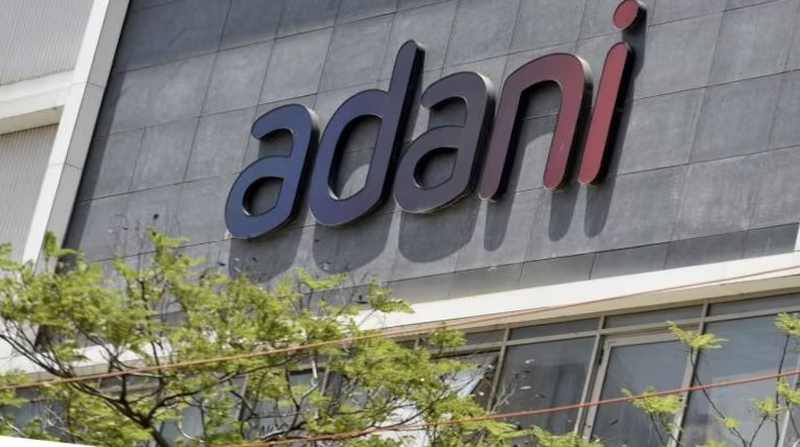
HYDERABAD, (PTI): Business conglomerate GVK Group on Wednesday categorically said there was no ”extraneous pressure” from anyone to sell its stake in Mumbai airport as alleged by Congress leader Rahul Gandhi.
The company’s comments came a day after Gandhi alleged in Lok Sabha that ”Mumbai airport, was taken away from GVK using agencies such as the CBI and the ED, and was given to Adani by the Government of India”.
”GVK reiterates that the decision to sell its stakes in Mumbai Airport to Adani, was taken by the management and there was absolutely no question of any extraneous pressure being exerted on us,” GVK Group spokesperson told PTI.
Adani Group, which is currently in the eye of a storm over the recent report by short-seller Hindenburg Research related to its company’s business dealings, took over the management of the Mumbai airport from GVK Group in July 2021.
While explaining the circumstances that led to the sale of the airport, GVK Group Vice Chairman Sanjay Reddy told a TV channel that it was looking to raise funds for the airport business.
Reddy said that at that time, Adani Group founder-chairman Gautam Adani approached him saying he had a lot of interest in the airport and whether GVK Group was willing to do a transaction with him.
”… He (Adani) said that he will assure that we will conclude the entire transaction in one month which was very important for us. So, from that perspective, whatever we did was in the interest of the company and the lenders who we had to repay and therefore, we had to close the transaction with Adani because we didn’t see any light of day with the other investors,” Reddy said.
While leading the Opposition attack over the Adani-Hindenburg issue in Lok Sabha on Tuesday, Gandhi alleged that the government tweaked rules in favour of Adani and said the clause that no one without any prior experience would be involved in the development of airports was done away with.
”This rule was changed by the government and Adani was given six airports. After that, India’s most strategic, profitable airport, Mumbai Airport, was taken away from GVK using agencies like the CBI, ED, and was given to Adani by the Government of India,” he alleged.
In July 2021, Adani Enterprises Limited said Adani Airport Holdings Ltd (AAHL), the flagship holding company of Adani Group’s airport business, will hold nearly 98 per cent stake in GVK Airport Developers Ltd (GVKADL) pursuant to the rights exercised by it as a lender to the company.
AAHL took over the management control of Mumbai International Airport Ltd (MIAL).
GVKADL is the holding company of GVK Airport Holdings Ltd (GVKAHL) which holds 50.50 per cent equity stake in MIAL. The latter holds 74 per cent equity stake in Navi Mumbai International Airport Ltd. (PTI)
Business
Most Adani group cos rise; Adani Enterprises jumps 14 pc
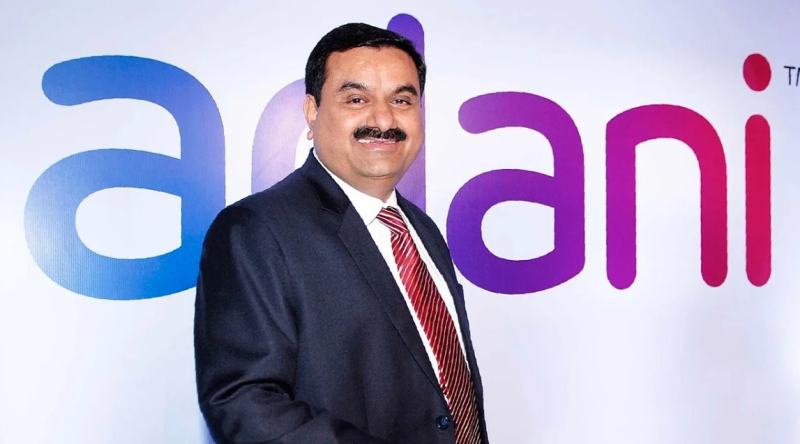
NEW DELHI, (PTI): Most of the Adani group companies rose on Tuesday, with flagship Adani Enterprises gaining 14 per cent in late morning trade.
Amid volatile trading in the market, eight Adani group firms gained while two were in the red.
On the BSE, shares of Adani Enterprises jumped 14.28 per cent to Rs 1,797 and Adani Transmission climbed 5 per cent to Rs 1,324.45, also its upper price band.
Adani Ports and Special Economic Zone rose 5.79 per cent to Rs 577.65, while Adani Green Energy jumped nearly 3 per cent to Rs 913.70.
Shares of Adani Wilmar went up 4.99 per cent to hit the upper price band of Rs 399.40.
ACC jumped 3.13 per cent to Rs 2,031.20, Ambuja Cements climbed 3.20 per cent to Rs 391.60, and NDTV surged 5 per cent to reach the upper price band of Rs 225.35.
Out of the ten listed companies of the Adani group, two were in the red — Adani Total Gas slumped 5 per cent to touch the lower price band of Rs 1,467.50, and Adani Power declined 2.93 per cent to Rs 177.10.
On Monday, six of the group companies closed in the red. The combined market capitalisation of the group companies has eroded by Rs 9.5 lakh crore since January 24, when the US-based short-seller Hindenburg Research came out with an adverse report.
Adani group, on Monday, said that the promoters will pre-pay USD 1,114 million for the release of pledged shares of its firms ahead of the maturity in September 2024.
These shares belong to Adani Ports & Special Economic Zones, Adani Green Energy and Adani Transmission.
The Hindenburg Research report has rattled investor sentiments towards Adani group stocks.
In late morning trade, the 30-share Sensex dropped 158.39 points to 60,348.51 points. (PTI)
Business
Plea in SC seeks constitution of committee to probe Hindenburg Research report on Adani Group

NEW DELHI, (PTI): A plea has been filed in the Supreme Court seeking a direction to the Centre to constitute a committee monitored by a retired apex court judge to enquire and investigate into the Hindenburg Research report which made a slew of allegations against the business conglomerate led by industrialist Gautam Adani.
The fresh public interest litigation (PIL), filed by advocate Vishal Tiwari, has also sought directions to set up a special committee to oversee the sanction policy for loans of over Rs 500 crore given to big corporates.
Last week, another PIL was filed in the apex court seeking prosecution of short seller Nathan Anderson of US-based firm Hindenburg Research and his associates in India and the US for allegedly exploiting innocent investors and the ”artificial crashing” of Adani Group’s stock value in the market.
The Adani Group stocks have taken a beating on the bourses after Hindenburg Research made a litany of allegations including fraudulent transactions and share-price manipulation against the business conglomerate led by Gautam Adani.
The Adani Group has dismissed the charges as lies, saying it complies with all laws and disclosure requirements.
In his plea, Tiwari has said the petition depicts the ”drastic condition and fate of people” when there arises a situation of share fall in the securities market due to various reasons.
”Lots of people who had the whole lifetime saving in such stocks get a maximum setback due to fall in such shares with a huge amount of money getting into drain,” the PIL said.
It said with the recent news of the publication of the Hindenburg report, it has led to the loss of huge amount for various investors who have invested their life-saving in such shares.
”In the aftermath of an unprecedented attack on billionaire Gautam Adani’s vast empire by Hindenburg, the market value of all 10 Adani stocks have halved with investors sitting with a colossal loss…,” the plea said.
It claimed that no concrete steps have been taken by authorities on the issue despite a ”massive attack being perpetrated” on the country’s economy.
”It is ultimately the public money for which the respondents (Centre and others) are answerable and there needs to be strict concern for mitigating of such loans with a clear process and sanction policy for such high stake loan amount,” it said.
The plea has made the Centre and others, including the Reserve Bank of India and the Securities and Exchange Board of India, as respondents. (PTI)




































